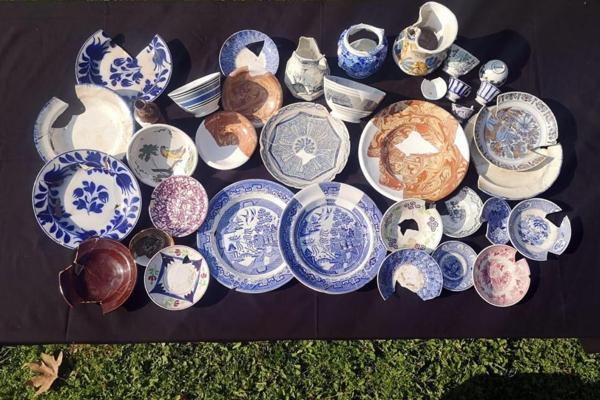Finds shed light on İzmir’s Smryna Agora
İZMİR


Amid the ongoing archaeological excavations to uncover Smyrna Agora and Smyrna Theater on an area between İzmir’s Kadifekale and Kemeraltı districts, the traces from Hellenistic, Roman and Byzantine periods, as well as various principalities and the Ottoman era, have come to light so far.
Associate Professor Akın Ersoy, a lecturer at İzmir Katip Çelebi University’s Department of Turkish-Islamic Archeology and the head of the Smyrna ancient city and Agora Theater excavation committee, stated that during the last two years, they found remains of a gymnasium in the Smryna Agora, while excavations still continue to uncover them.
Stating that a Satyros relief and a body part of the Herakles statue came to light during the excavations, Ersoy said that they also found findings related to the culinary culture of İzmir.
Archaeological excavations carried out on an area of 193 hectares have revealed thousands of objects from various periods. The artifacts provide information about the social and commercial life of the period.
Ersoy stated that İzmir changed places three times in a span of 8,500 years and said, “The third displacement is represented by the archaeological finds in Konak in the last 2,500 years. There are Byzantine, Beylics, Ottoman and Republican eras.”
Ersoy stated that they have been working for six years to reveal the 20,000-people capacity Smyrna Theater on the outskirts of Kadifekale. “We have so far uncovered the 5,000-people capacity section. Due to the fact that the theater is in the city, it has some disadvantages. It was used as a quarry in the late Byzantine and Ottoman eras, and we see that a significant amount of seating arrangements have been dismantled. We are not surprised when we see the stone of the theater in the inns of Kemeraltı or monumental buildings.”
“In the excavations in the Agora of Smyrna, we are working on public structures of the agora. There is a strong Ottoman period. Especially the 19th century is very important. These relics are uncovered at the highest level. Beneath these ruins, we discovered a Roman bath structure. In the last two years, we have identified ruins that we believe is a gymnasium. Excavations continue to unearth the gymnasium and also an inn from the Ottoman period. There are also remains from Roman and Ottoman periods unearthed at some points in Kemeraltı,” Ersoy added.
Providing information about the artifacts and materials unearthed during the excavations, Ersoy said, “We come across plastic artifacts in the works carried out in the stage section of the theater. There is a visually prominent Satyros relief. It is exhibited in the İzmir Museum. We can also find the images of mythological beings. The Satyros we have found is a male mythological being. It was used in the decoration of the theater. It is a human-sized relief. We found a statue of Heracles. Many statue fragments, including foot and hand pieces of statues of emperors and gods, can be found here. We understand that the Smyrna Theater has a very rich understanding of ornamentation.”
Stating that they practice urban archaeology, Ersoy said that because it is a layered city, they have reached not only the artifacts from the Pagan, Hellenistic and Roman periods but also from the Ottoman period.
“Traces and finds are related not only to architectural works but also to the Ottoman cuisine culture, and lifestyle in İzmir is being revealed. There are a lot of European ceramics. İzmir, with its Levantine and other communities, was a multi-ethnic city during the Ottoman era. We see that materials for every taste were sold. A part of this is European ceramics. These ceramics, especially from Italy and France, were fondly used on the tables of the houses in İzmir. As an Anatolian material, Kütahya ceramic is another material used in the tables of houses in İzmir. We can observe the last 2,500 years of İzmir’s Konak district center from these materials,” he said.
